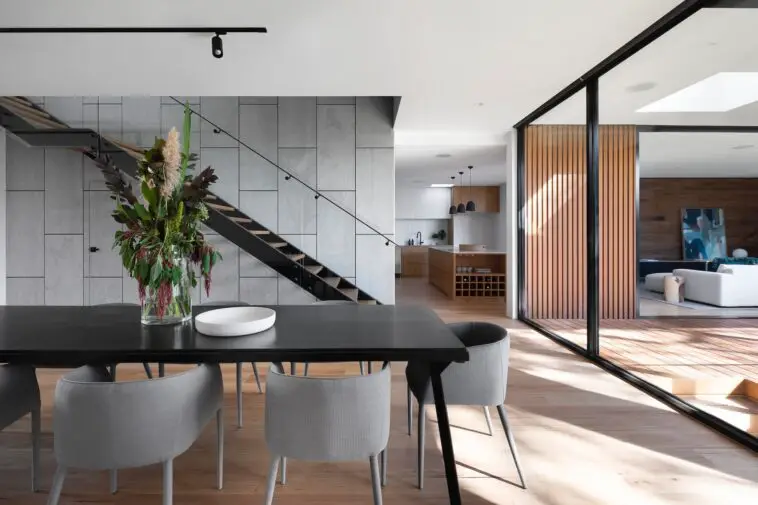The significance of visualization in the ever-changing world of real estate, where the success or failure of deals often depends on physical assets, cannot be stressed. Two-dimensional images have traditionally been used; however, they fall short of conveying the expanse and character of a property. Here comes the game-changing invention of 360-degree virtual tours, which is set to transform the market by solving long-standing problems encountered by homebuyers, sellers, and real estate professionals. Here, we look deeply into the revolutionary potential of 360-degree renderings and their function in changing the face of the real estate industry.
Enhancing Property Visualization
Traditional methods of marketing real estate, which rely entirely on still photographs, have obvious drawbacks. Traditional photographs only show a small portion of a space, leaving potential purchasers wanting more information. In comparison, 360-degree immersive renderings represent a paradigm change by delivering a thorough and all-encompassing perspective on properties. These visuals capture every detail of a building, allowing prospective purchasers to explore every nook and cranny virtually. These renderings encourage a sense of curiosity because of their interactivity, providing prospective purchasers with a journey around the home that is as close as possible to the real thing.

The production of high-quality 360 renderings is crucial in improving the property visualization process as a whole. These representations, which can capture every detail of a property, alter how purchasers look at and interact with homes for sale. For those seeking a reliable source of such renderings, Blinqlab Direct emerges as a steadfast solution. As a reputable company specializing in professional real estate marketing solutions, Blinqlab Direct is equipped to deliver immersive and realistic 3D renderings that transcend the boundaries of traditional imagery. For those in pursuit of a visual experience that resonates authenticity and detail, exploring their offerings on their website promises to be a prudent step toward harnessing the full potential of high-quality 360 renderings.
Overcoming Distance Barriers
The spatial challenge of physically visiting a property, particularly when geographical distances are vast, has long impeded effective property transactions. This is where the transformative potential of immersive 360 renderings comes into sharp focus. These renderings act as a virtual bridge, defying geographical limitations and enabling virtual property tours. A buyer from a distant corner of the world can now navigate a property as if they were present, transcending the constraints of physical distance. The result is a newfound feasibility of long-distance property transactions, expanding market horizons for sellers and offering unparalleled convenience for buyers.
Aiding Informed Decision-Making
Immersive renderings redefine the very essence of property depiction, offering prospective buyers an unvarnished and authentic portrayal. Buyers can meticulously evaluate features, nuances, and conditions within the confines of a virtual environment. The level of detail these renderings provide equips buyers to expedite decision-making while instilling confidence in their choices. This departure from relying on imagination empowers buyers to enter a property virtually, experience its dimensions, and assess its compatibility with their requirements.
Cost and Time Savings

The traditional approach to property staging often entails a substantial investment of resources, encompassing time, effort, and financial outlay. Immersive 360 renderings, in their revolutionary capacity, present an enticing alternative to traditional physical staging. Rather than investing in elaborate furnishings and decor, sellers can exhibit their property’s allure through meticulously crafted renderings. The benefits also extend to buyers as the need for repeated physical property visits diminishes. Thus, time efficiency is mutually realized, benefitting both prospective buyers and sellers.
Architectural Customization and Personalization
Immersive 360 renderings harbor a transformative facet: the potential to transcend reality and venture into possibility. Sellers can utilize these renderings as a canvas to showcase potential property modifications and renovations. The prospects of architectural customization, from altering paint hues to reconfiguring structural elements, are vividly presented through these renderings. This engagement prompts buyers to forge emotional connections with properties by visualizing personalization possibilities, fostering heightened buying involvement.
Overcoming Language and Communication Barriers
Language barriers in the diverse arena of global real estate often complicate effective communication between parties. Immersive visuals, devoid of linguistic constraints, transcend these barriers. A meticulously rendered living space conveys eloquence that transcends linguistic nuances, enabling seamless communication between international buyers and sellers. The visual medium engenders a universal understanding of property attributes, heralding a new era of cross-cultural transactions.
Boosting Marketing and Sales

In a real estate sphere characterized by cutthroat competition, differentiation is pivotal. Immersive 360 renderings emerge as a potent marketing tool, captivating potential buyers with their irresistible allure. Properties showcased through these renderings exhibit a magnetic quality, drawing in more potential buyers due to their captivating and interactive nature. These renderings can be seamlessly incorporated into online listings, promotional campaigns, and virtual open houses, facilitating an avant-garde approach to property marketing that augments desirability and competitiveness.
Challenges and Considerations
Amid the promise of immersive 360 renderings, pragmatic considerations come to the fore. While these renderings are transformative, users must possess compatible technology to unlock their full potential. Compatibility issues might surface, contingent on the devices employed by viewers. Additionally, the authenticity of rendered images must be assiduously maintained. Buyers must be assured that the visual rendition harmonizes with the physical property.
Industry Adoption and Future Trends
The real estate domain is rapidly embracing immersive technologies, orchestrating a paradigm shift. The convenience, value, and experiential dimension furnished by immersive 360 renderings fuel their burgeoning adoption. Virtual property tours, once a novelty, are now evolving into a standard offering across the industry. The future holds the promise of escalated rendering quality and heightened realism, auguring an era where the boundary between the virtual and the physical blurs further.
A New Dawn for Real Estate
In the fast-evolving crucible of the real estate landscape, immersive 360 renderings stand as a beacon of transformation. Beyond innovation, these renderings herald a new dawn for the industry itself. By enabling remote exploration, informed decision-making, customization visualization, and international communication, immersive 360 renderings have unveiled a treasure trove of possibilities. To thrive in this transformative milieu, real estate professionals must not merely adapt but embrace this immersive revolution. With immersive 360 renderings, the future of real estate unfolds before our very eyes, inviting us to reimagine what is possible and redefine the very essence of property transactions.
The Resurrection of Real Estate Through Technology
The lockdowns and the quarantine periods endured by the whole world into an unknown realm. Luckily Technology came to the rescue of the stranded and stressed individuals across the planet. Technology, especially web-related services, has given wings to some of the often looked down sectors such as online education, OTTs, etc., and made it the norm!
It has also given a boost to several wounded industries a chance to push themselves to the forefront. Real estate is one such sector that has resurrected itself from the current crisis. Real Estate Technology, especially Proptech (Property Technology), has evolved to cater to the common man without losing its status quo as the largest asset class in the world.
Technological Advancement of Real Estate
Though the seeds were sown much earlier at the beginning of the 2000s, the sector has been rather shy to exploit them other than the property listing websites. Granted, the late 2019s has rolled it onto a spree where it opened up to the latest advancements and innovations. However, coronavirus cemented the deal. Now it’s one faster pace to implement some, and the rest has already become mainstream!

1. Virtual Reality
Virtual reality, as well as augmented reality, has been in the game for a while now. Though they have been more into the gaming and entertainment section, real Estate has used them to a fair point of advantage, primarily through virtual Site visits and walkthroughs. This has been rather popular lately due to COVID, and the restricted travel and human interaction. Virtual tours often deliver variables that the customers do not receive during site visits.
2. Investment Predictions
Data Analytics was already a mainstream part of real Estate since 2018, and the heat maps, which lead to the investment predictions of a particular locality. In the current era, investment in land is seen as a worthwhile project compared to other options in the liquid asset classes. This is mainly because a home now is also seen as a safe haven that shelters one from the disease.
3. Home Automation and IoT
Home automation may seem to be the odd one here. It falls more onto an entertainment and home decor sphere than the traditional real estate sector. However, there has been a surge in demand for the houses for both rent and buy, which has a home automation facility. The forced lockdown increased the time that the populace spent inside the home. Naturally, a sense of comfort and convenience has taken over humanity.
The concern of safety has played an important role. Home automation also ensures heightened security detail, including anti-burglar techniques and reinforced locks. This, along with the added option of a personalized workspace, sealed the deal.Though all of this has a major part, which mostly affected the real estate sales, especially of the residential segment, is real estate digital marketing.
When the real world was locked down, the people went into the digital world. It is widely said that April, May and June months of 2020 amount to the highest rate of traffic on the internet since its inception. This was when most of the countries around the world went into lockdown.
Thus salesmanship had to arouse the digital audience much more than it usually did. And what happened after was the rise of digital campaigns across the search engines and social media platforms. The realtors and developers, instead of merely pitching out their products started to enlighten the audience about the trends of investing in real estate.
Many developers portrayed the real problems they had to face because of the lockdown, including the lack of resources and raw materials and the need to increase the prices of projects that are under construction.
Real estate is the largest asset class globally, often standing tall, accessible only to the elites is the popular notion. However, this was turned over during these last few months as the sector reached out to a broader and younger audience, who will hold the reigns to the future.
Investing in Real Estate has become a trend among the youth with extensive online advertising and awareness campaigns to own a home and gain financial independence. The campaigns also extensively used content marketing to educate the populace about the loans and taxes one has to incur.
Thus just as mutual funds captured the audience during the second half of the 2010s, realty now jumped onto the bandwagon.
Real Estate, thus incorporating technology, has both redeemed and resurrected itself during the troubled times and awaits a brighter future, where it has an unprecedented edge.




